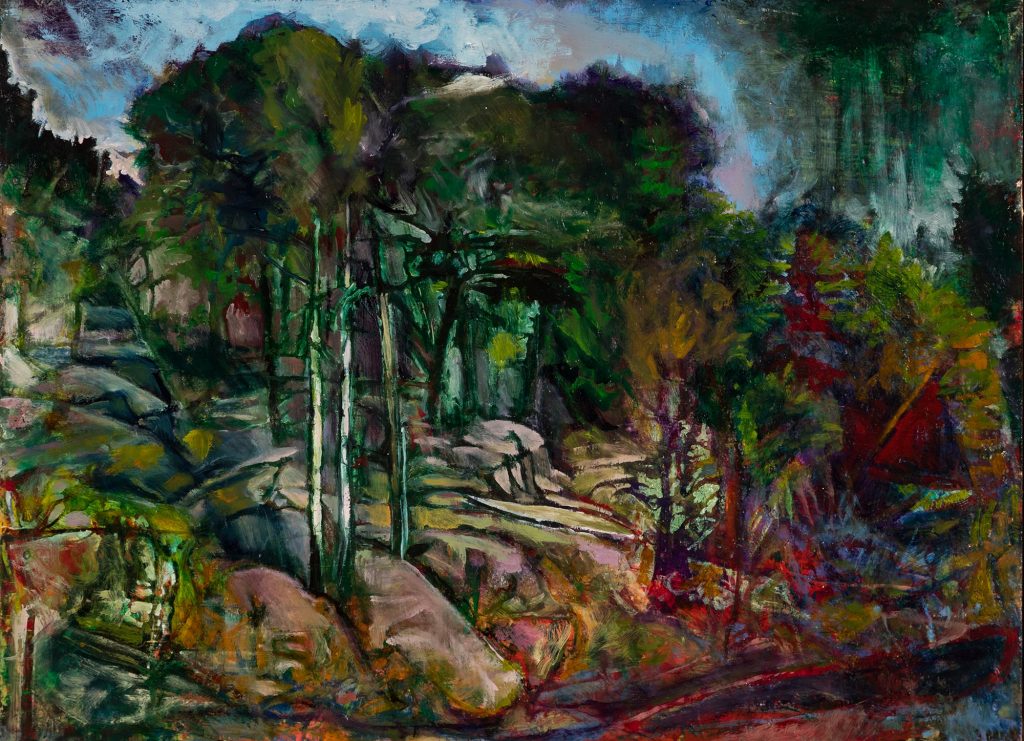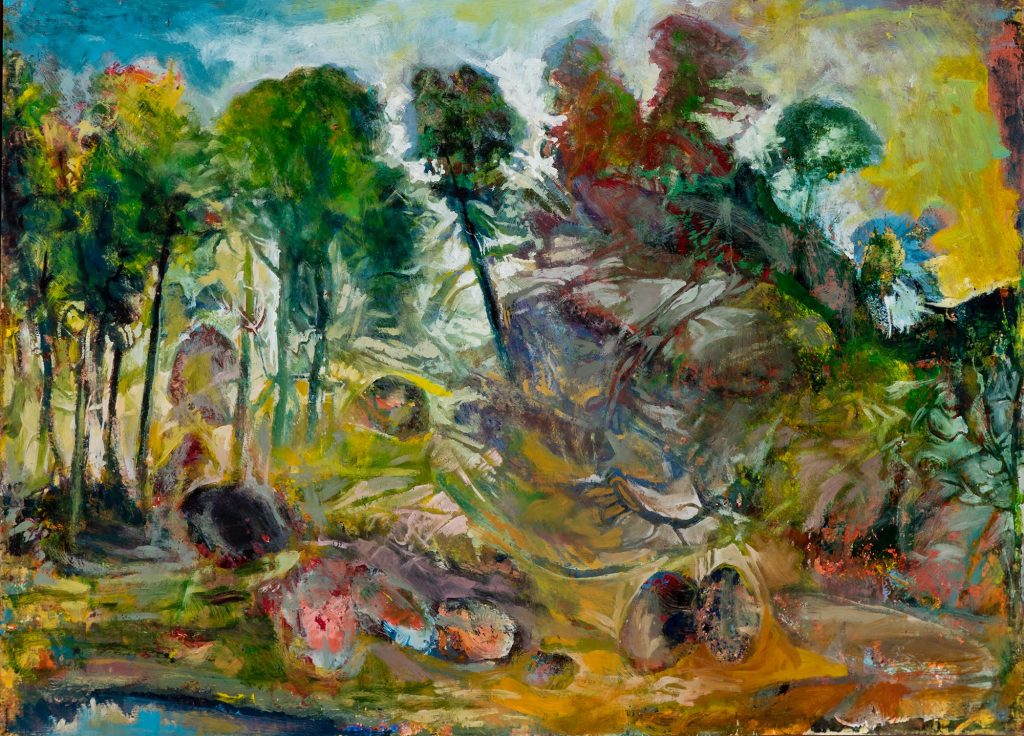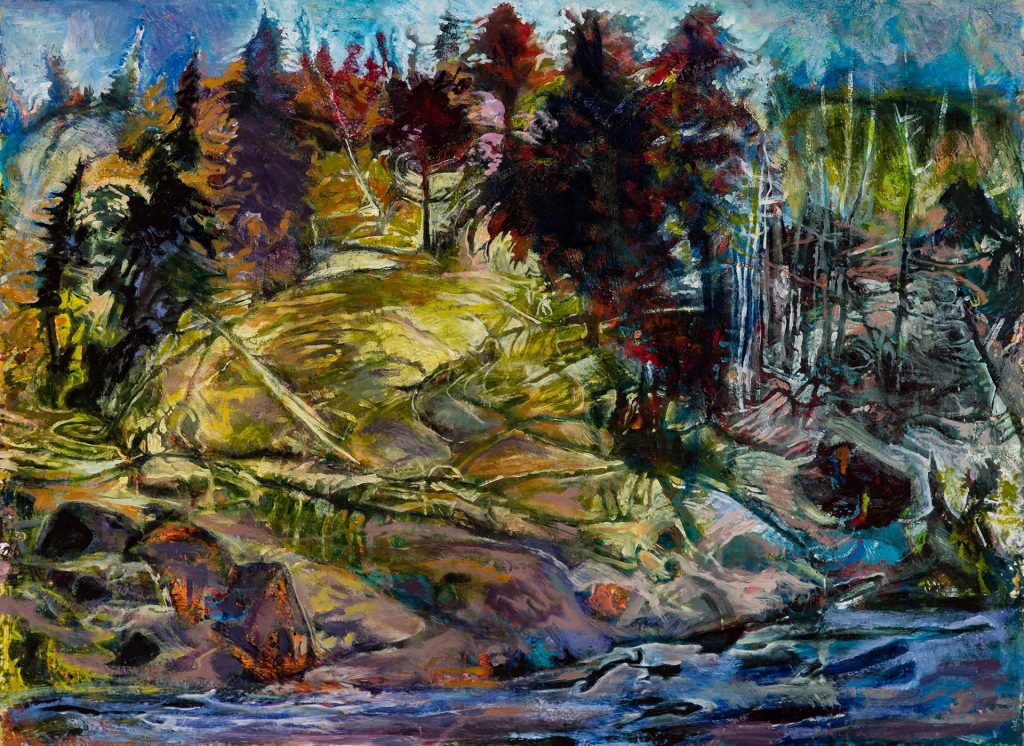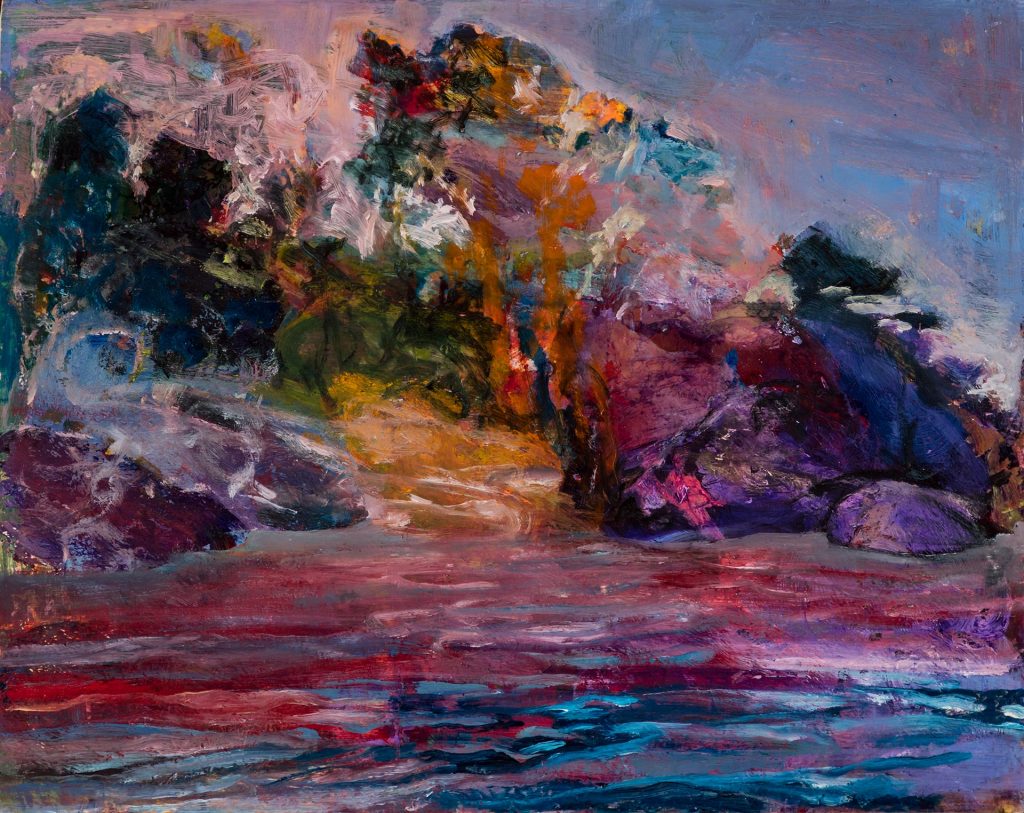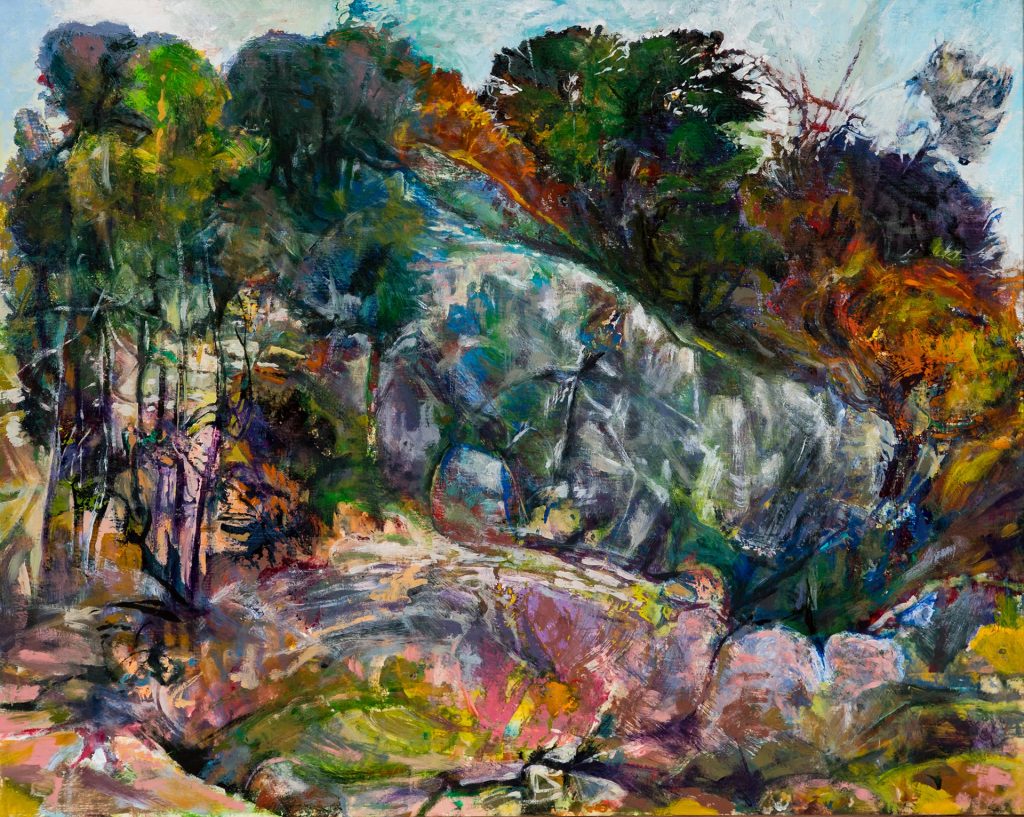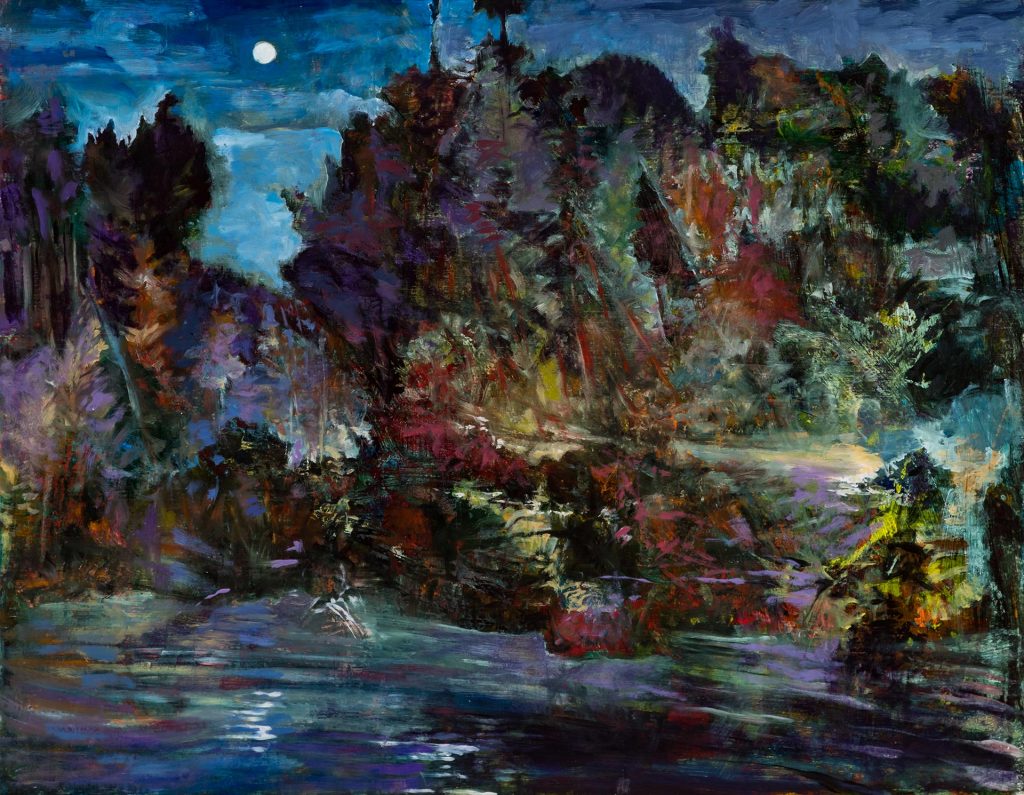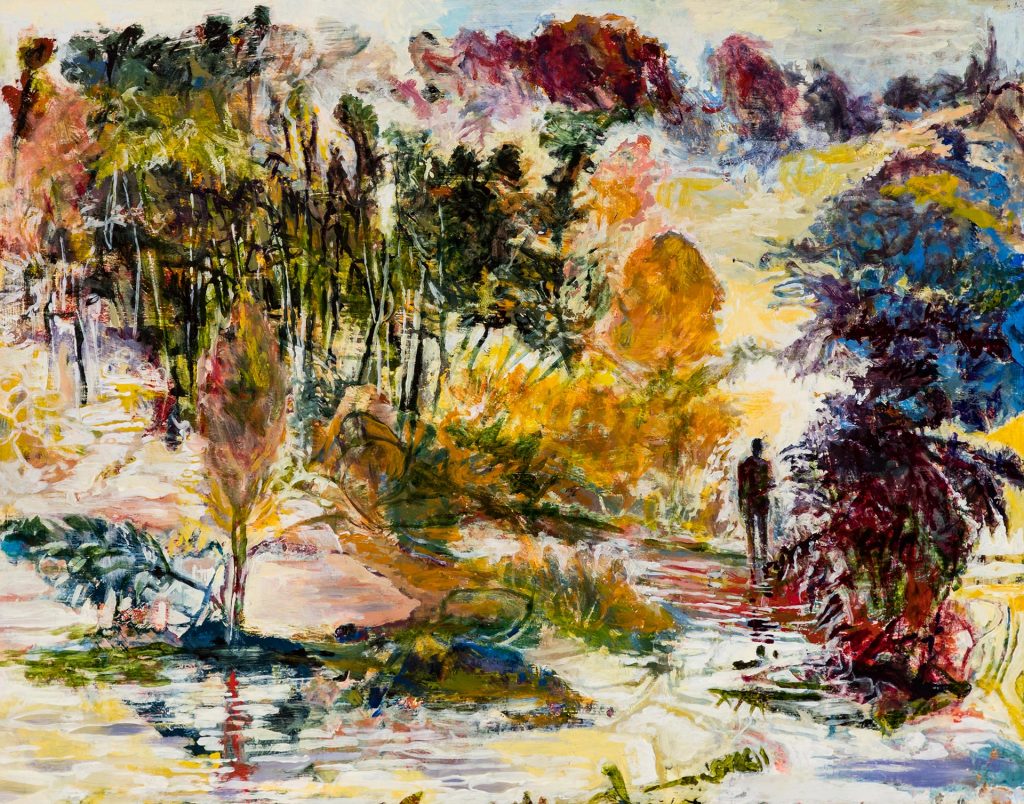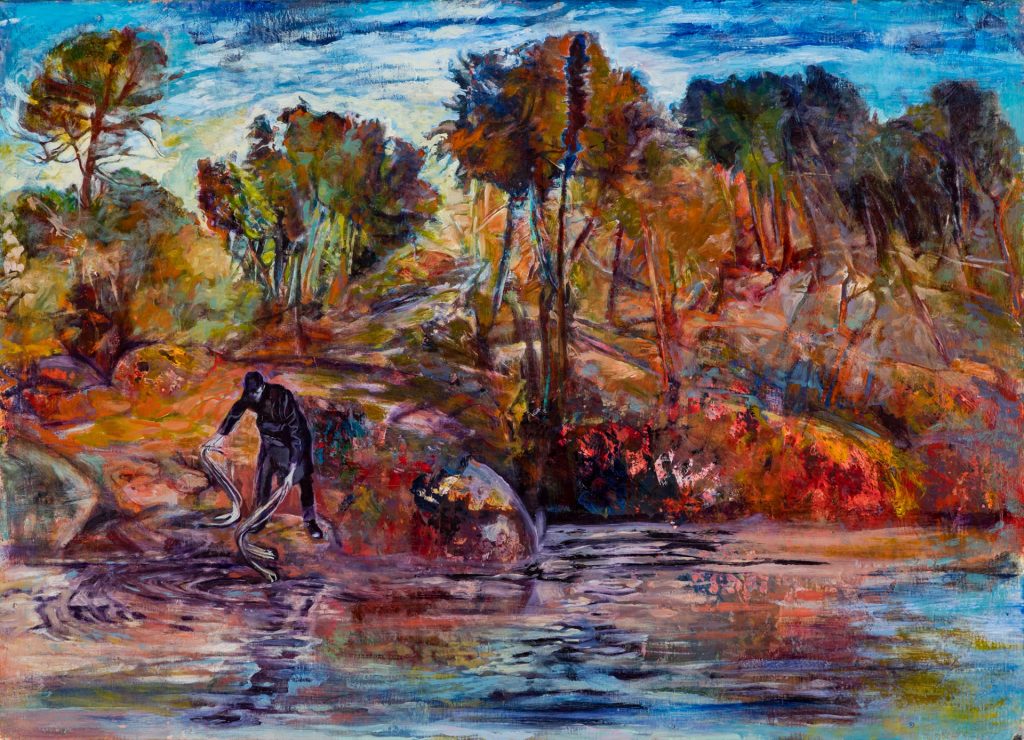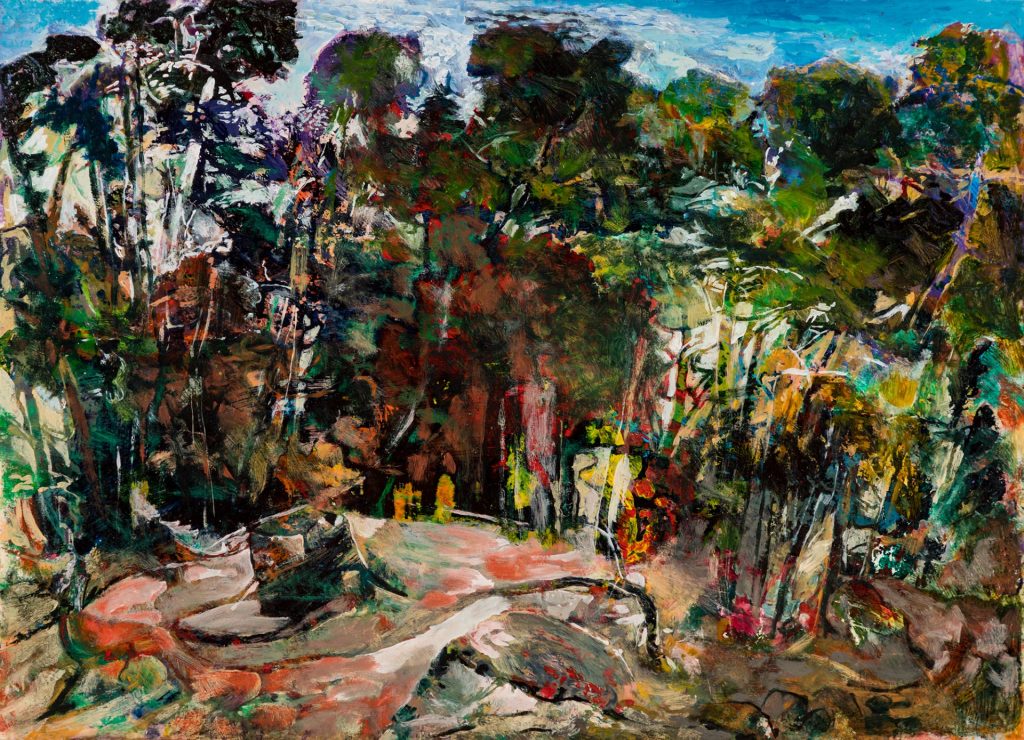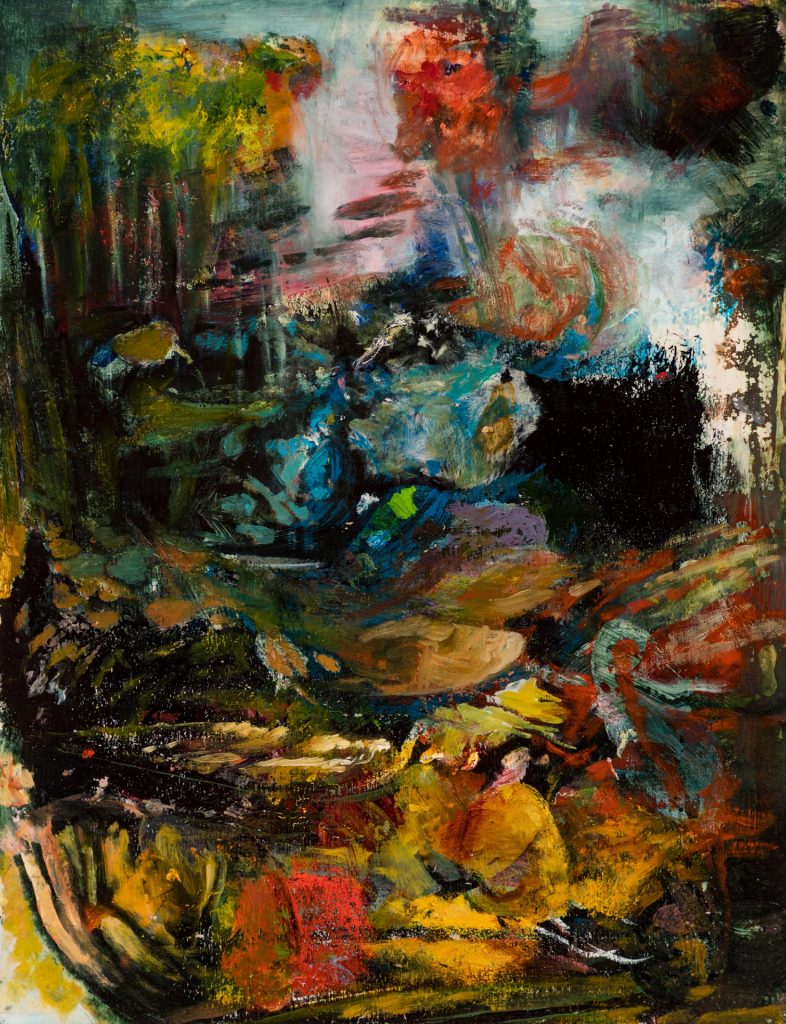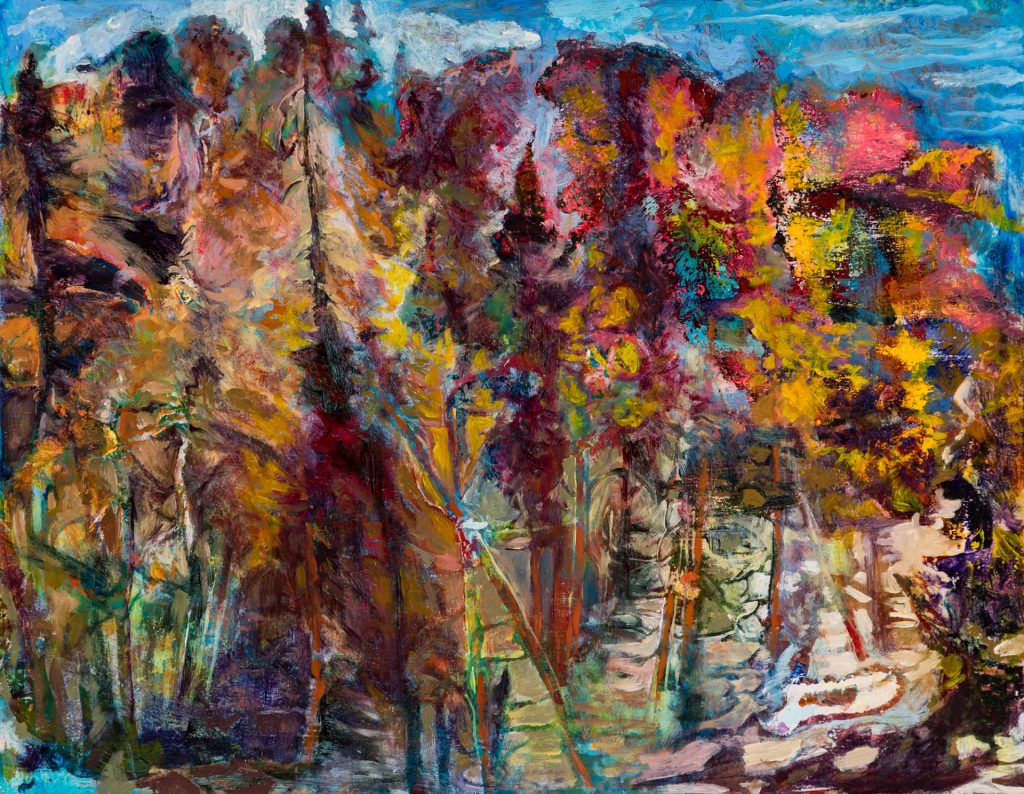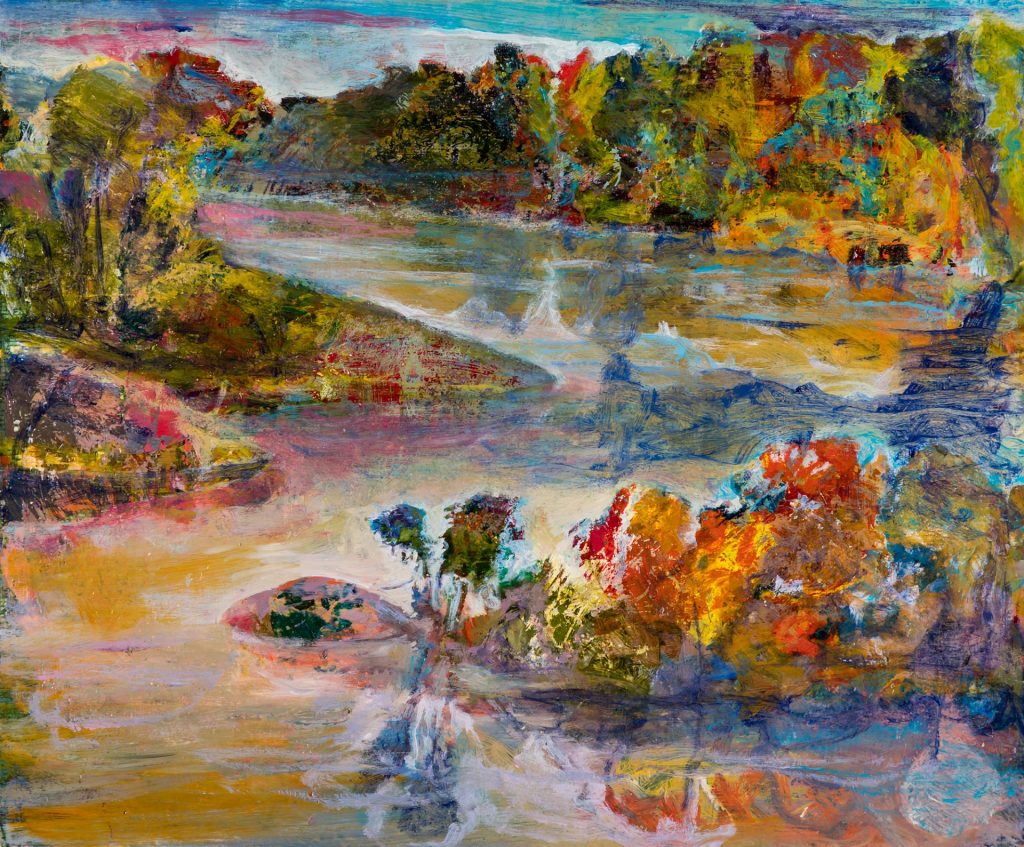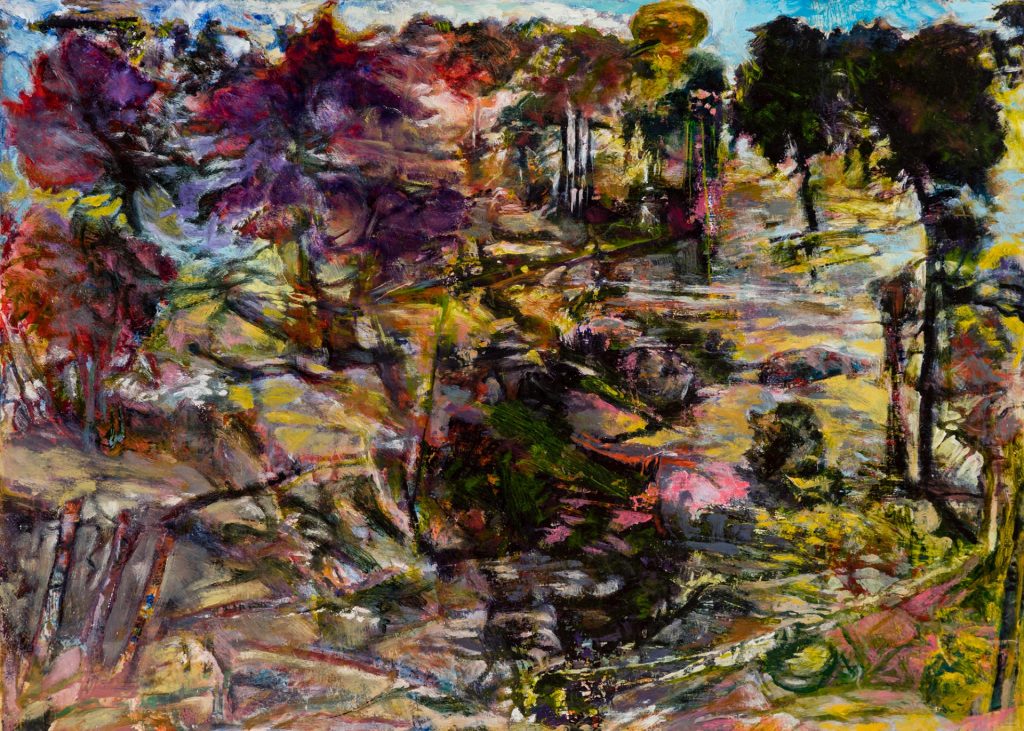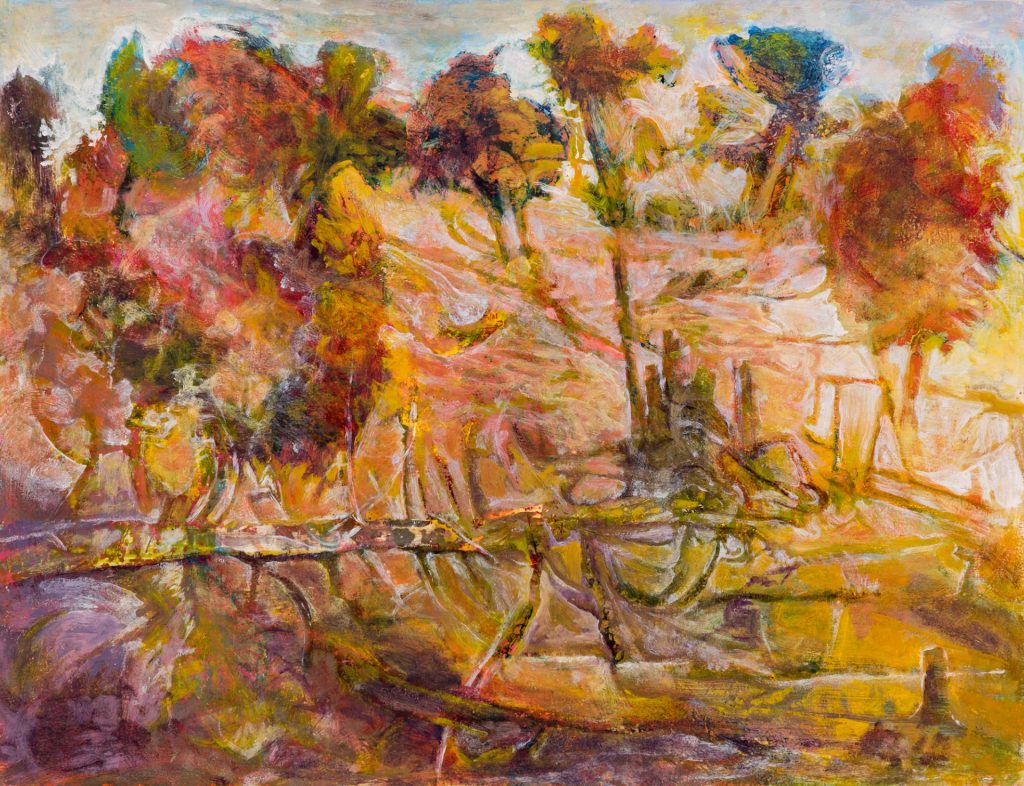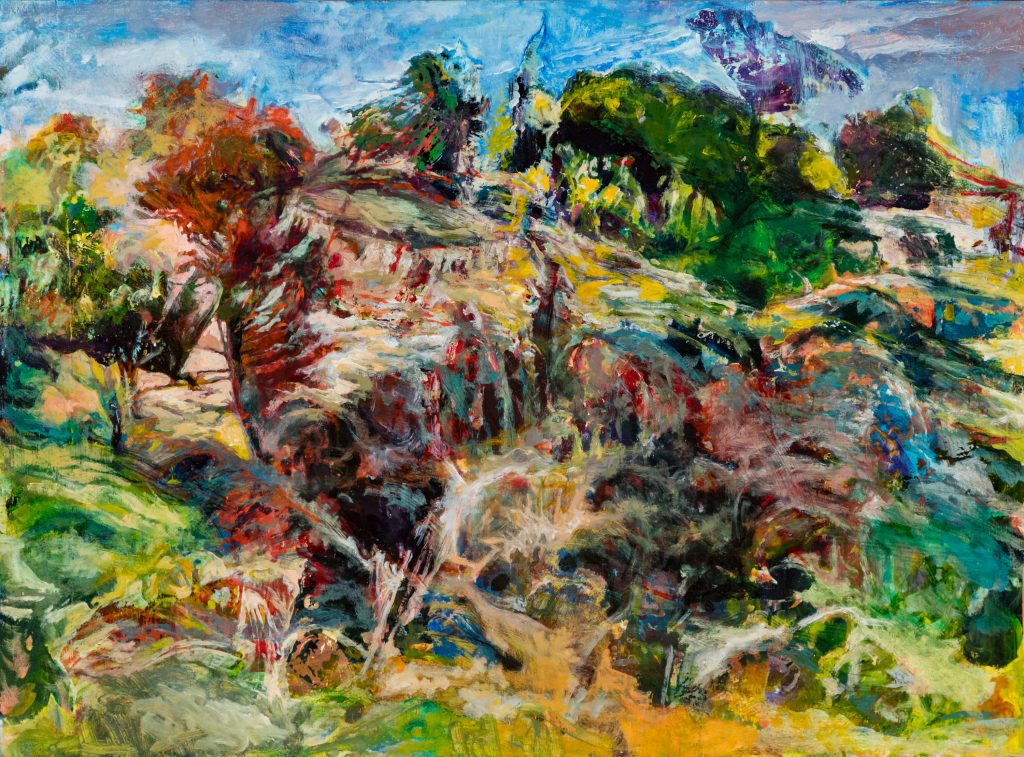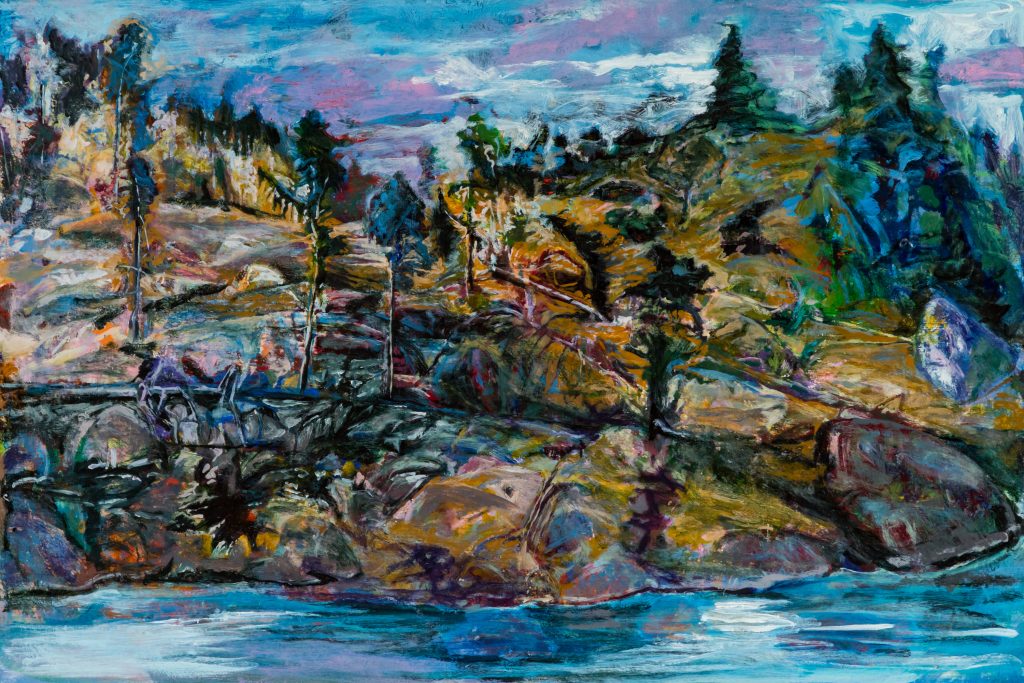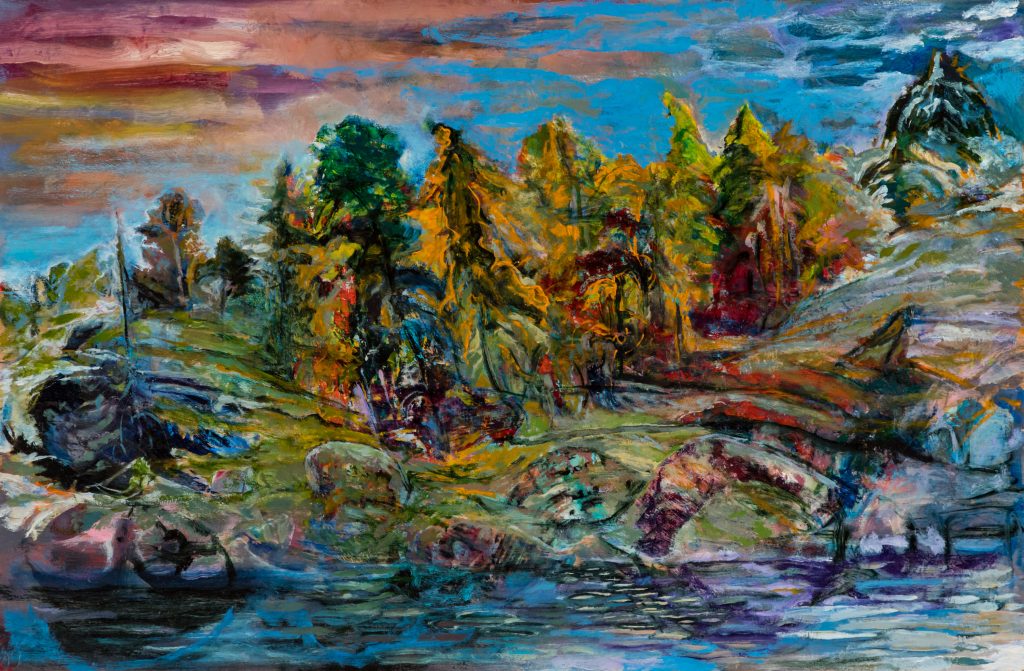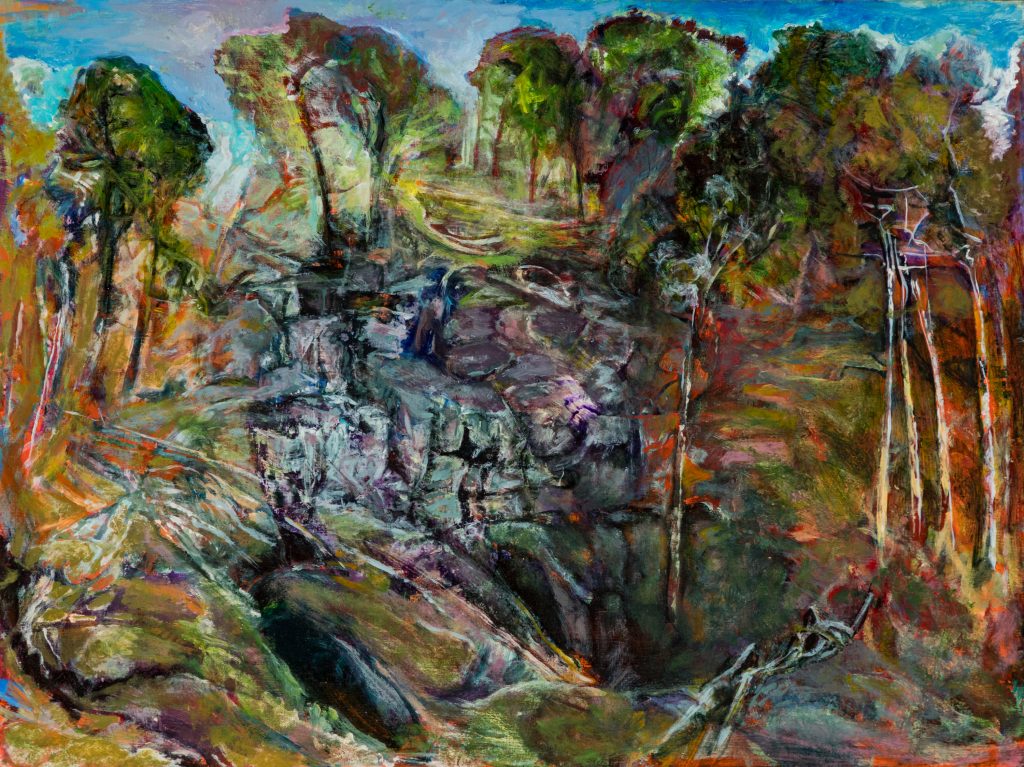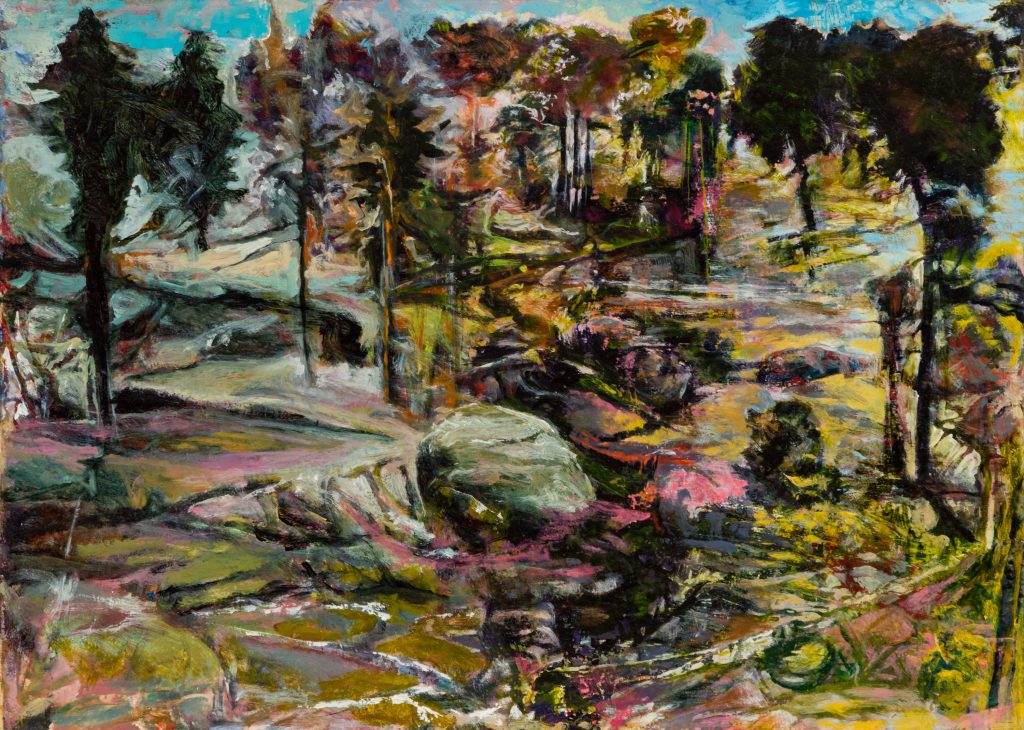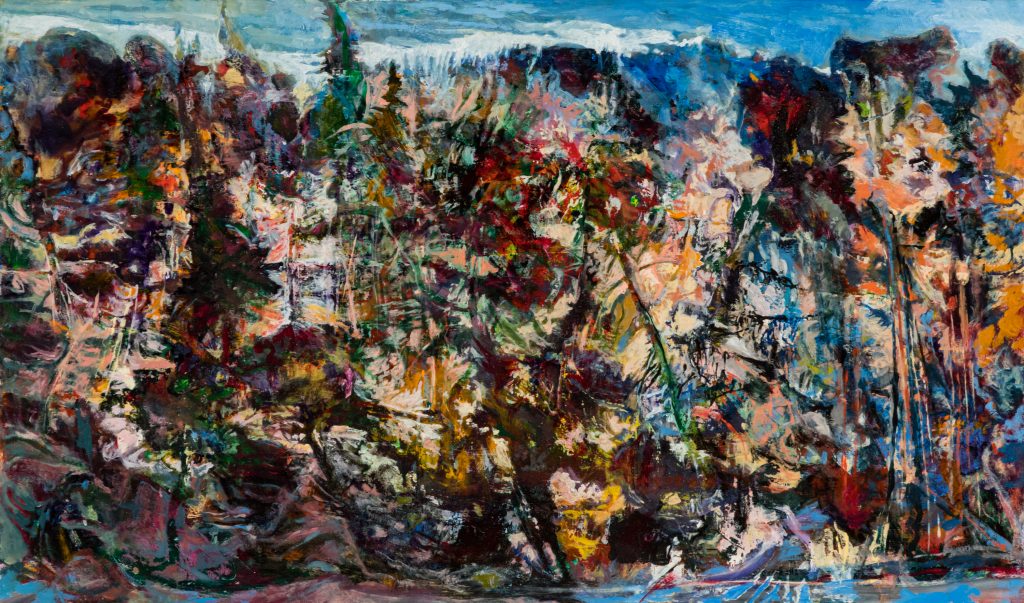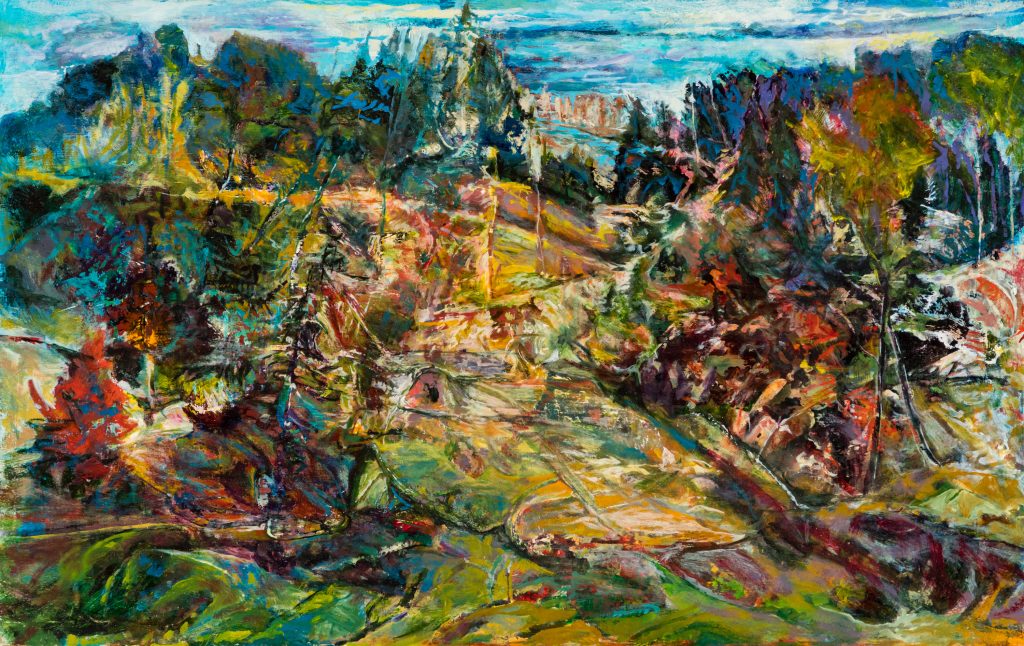Galleries
Bushland Series
Bushland Series / When I was a Forest
(2010-Present)
When I was a stream, when I was the
forest, when I was still the field,
when I was every hoof, foot,
fin, and wing, when I
was the sky
itself,no one ever asked me did I have a purpose, no one ever
wondered was there anything I might need,
for there was nothing
I could not
love.– Excerpt: Meister Eckhart, thirteenth century
For much of my childhood, I had the freedom to roam mostly unsupervised in northern bush settings. Places that were wild and potentially dangerous. With no one accompanying me, the land seeped into my bones unfiltered by adult explanations or interpretations. I immersed myself in a world of forest and lake and rock, where everything seemed in the constant motion of actively trying to survive. A riot of life. Of course, my family and other people lived in this environment, responding to and shaping it in various ways. But my childhood attention was often and intensely focused on the land and its non-human inhabitants.
In art school, over fifty years ago, Abstraction Expressionism was in vogue. I felt my love of landscape would be seen as retrograde. But my childhood spent in parts of Manitoba’s and Ontario’s Precambrian Shield continued to exert a strong pull on my creative imagination. I started trying to find forms for my childhood impressions and ways to place my experiences in a larger cultural context.
The art historian Simon Schama has written that, “Landscapes are culture before they are nature.” What does my culture tell me about nature and what is the nature of nature? Can we define nature independently of our interpretation of it? How has living in Winnipeg, particularly these last years living in a residential neighbourhood, with a front and back yard comprised of complex plantings created by my marriage partner changed my relationship to the land? How do I incorporate ideas about global stewardship and human responsibility for whatever we term nature into my landscape painting practice? These are questions I continue to think about as a means of understanding the possible meanings of landscape in art, my enduring art obsession.
The pieces in my Bushland series are what I consider fictive topothesias, descriptions of imagined or non-existent places. I have painted them on heavily encrusted, small wooden palettes. I scrape these palettes, then paint on them. My scraping results in randomly colored, often highly textured backgrounds: appropriate metaphors for the seeming chaos and incomprehensibility of the world. It is a process that links me to my early experiences of nature. It returns me to all that beautiful, overwhelming and complex glory. A friend recently described my small landscapes as “organic anarchy”. His phrase accurately describes my attempts to find forms in the seeming chaos of the scraped palettes, my way of entering a sense of nature with amazement and surprise.

